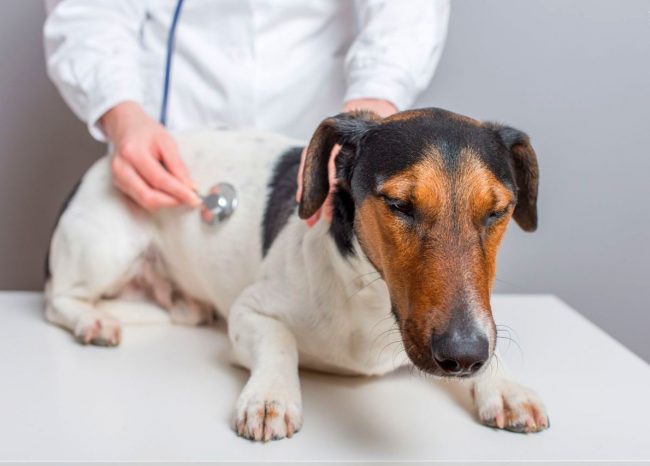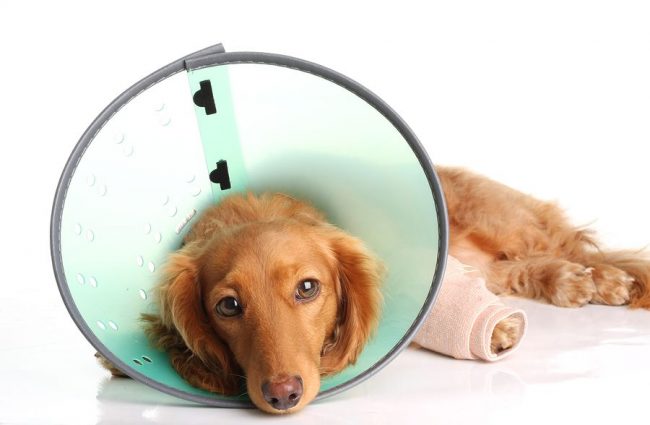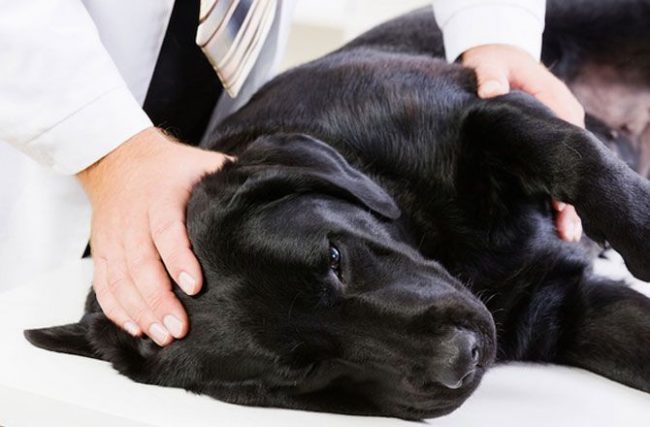
Our pets are kept clean, everything is done to them. vaccinations, they are cared for and cherished.
But to protect the animal from everything is unrealistic, and the dog can an infection such as staphylococcus develop.
On the skin of dogs staphylococcus in stasis always present. At the same time, healthy immunity protects the animal from the development of infection. However, in the summer, when dogs are more likely to take longer walks and they come in contact with a lot of others individuals, as well as when mating, comes the “time of staphylococcus”
Content
- 1 Staphylococcus in dogs and its causes
- 2 Staphylococcus in a Dog: Symptoms and their Recognition
- 3 Staphylococcus in dogs and methods of its treatment
- 4 Preventive measures to prevent development staphylococcus in dogs
Staphylococcus in dogs and the causes of its occurrence
Contents
On the skin of dogs staphylococcus in stasis always present.
At the same time, healthy immunity protects the animal from development infections.
However, in the summer, when dogs walk more often and longer, and they come in contact with a large number of other individuals, as well as with mating, there comes the “time of staphylococcus”.
If the animal has ticks, it’s may contribute to the development of staphylococcus. In this case help the collar from ticks.
Especially if the dog’s immunity is weakened, infections are easier penetrate the skin.
In this case, the disease can go in two ways:
- Primary pathology, that is, staph bacteria cause disease.
- Secondary form, when the dog is already sick with something, and staph infection exacerbates the problem and carries a threat damage to the internal organs of the animal.

The presence of fleas or ticks in an animal can lead to development staphylococcus. Keep a close eye on your pet’s condition
The state of the body of any animal has its own characteristics, and it is either resistant to infection, or vice versa – prone to her.
But there are some factors that contribute to how manifestation diseases, and contribute to its occurrence.
These include:
- the presence of diabetes mellitus or high content carbohydrates;
- vitamin deficiency, the lack of vitamins is more dangerous groups B, A and E;
- infection of internal organs: kidney and liver;
- the presence of fleas in the dog, and especially ticks, as well as demodicosis and allergies, which leads to skin diseases;
- weakened immunity or lack of resistance specifically to the causative agent of the staphylococcus virus.

Staphylococcus in dogs may contribute to the development of other diseases
Staphylococcus in a Dog: Symptoms and Their Recognition
The skin of an animal can react to infection in different ways – tuberous abscesses, inflamed rounded spots with a rim-like crust lichen.
In the latter case, the middle of such spots is devoid of hair cover.
If the pathological condition of the animal is diagnosed timely, treatment can give good results.
Therefore, it is important to be able to recognize the first signs diseases.
Unfortunately, the infection can also provoke other skin diseases:
- Ear infection characterized by anxiety animal, unpleasant odors and secretions, when running illness can develop facial paralysis (temporary).
- Pyoderma, usually manifested as a secondary infection – when the dog suffers from fleas, combing the skin, causing infection in the wounds and promoting its distribution.
- An allergic reaction caused by hypersensitivity to the presence of staph bacteria and characterized by irritations on skin and ulcers.
- The defeat of the mucous membranes, leading to complications – endometritis or pyometers.
- Otitis, which often causes damage to the inner ear and erosion turning into ulcers. If treatment is not started on time, rhinitis and conjunctivitis may develop.

Staphylococcus in dogs often turns into otitis media
I would also like to say about the symptoms of this variety diseases like Staphylococcus aureus in dogs, similar to food poisoning.
Mostly young individuals suffer from this, since the body does not fully formed, and immunity is not sufficiently fixed.
The course of the disease is complicated by vomiting and constant diarrhea, leading to rapid dehydration organism.
These are the most dangerous symptoms that, if improperly diagnosing can result in death.
In order to prevent staph in dogs, the symptoms the disease should be known and closely monitor your pet.
This is especially necessary in the summer, when the quantity contacts between animals increases significantly compared to cold season.

If you suspect staphylococcus in a dog, immediately contact to the veterinarian
Staphylococcus in dogs and methods of its treatment
First of all, it is necessary to undergo a diagnosis in which the animal take material for inoculation or biopsy.
In this case, they usually offer to undergo allergy and immune tests. illnesses.
This is done in order to establish the initial cause. illness or find out what nevertheless served as an impetus to her development.
If staphylococcus has developed in dogs, treatment involves First of all, removal of skin itching, as scratches on the skin lead to repeated infections and hinder the healing process.
To relieve inflammation, animals are recommended special shampoos and ointments with antibacterial components.
It can be preparations of the enzymatic group – lysozyme or chemotrypsin.
Drying and cauterization of foci of irritation is usually carried out tannin, dermatol, protargolum solution (2%) or solution potassium alum.

If staphylococcus has developed in dogs, treatment involves First of all, removal of skin itching, as scratches on the skin lead to repeated infections and hinder the healing process
Severe pruritus in an animal is effectively relieved by Tribask preparations and Chlorophyllipt.
You can wash the foci of irritation with Dimexidum or apply to him applications from novocaine.
Important! Compliance with animal hygiene in such a difficult period is simply necessary, because from walking on the street and, as a result, the risk of re-infection is completely protected your pet is impossible.
Veterinarians prescribe antibiotics for dogs either three, or, in severe cases, six weeks are conducted.
Sometimes animals suffer from reinfection. The thing is this case may be a different disease.
Perhaps the dog is suffering from hypothyroidism. But setting root causes is still the cornerstone in healing animal.

Veterinarians prescribe antibiotics for dogs either three, or – in severe cases – six weeks
Veterinarians know perfectly well how to treat staph in dogs, and may offer several ways depending on the condition patient:
- Specific immunotherapy, divided into active and passive form.
- The use of immunostimulants and antibiotics.
- The introduction of a bacteriophage.
Active immunotherapy involves increasing dog resistance to staph infection thanks to the introduction of antigens and toxoids.
Sometimes the drug “Antifagin” is introduced, but in some cases it turns out to be inactive in relation to that kind of staphylococcus, from which the dog suffers.
The introduction of a drug developed well has proven itself. specially for dogs – ASP, or staphylococcal toxoid polyvalent.
With passive immunotherapy, antistaphylococcal hyperimmune serum.
This is the best treatment at the initial stage of the disease or with its surface form.
In any other case, preference is given to active immunotherapy.
Immunostimulants give quite good results in treatment animals.
The course of antibiotic therapy, according to veterinarians, is most of all effective when using drugs belonging to the group quinolones – baytril, cytlox and enroxil.
Antibiotics are recommended to be used in combination – at least three varieties.

With the introduction of antibiotics and immunostimulating animals drugs should be kept in mind that they are addictive. For so that this does not happen, the drugs are changed or determined sensitivity threshold
With the introduction of antibiotics and immunostimulating animals drugs should be kept in mind that they are addictive.
In order to prevent this from happening, the drugs are changed or determine the threshold of sensitivity.
The bacteriophage is inherently a virus, its introduction into the body contributes to the death of staphylococcal infection.
This method is quite effective. But with any course of the disease both local treatment and general treatment are prescribed.

To avoid the disease, first of all, the dog should have strong immunity, able to withstand penetration infections. Also should not be allowed to contact sick animals or those who have a suspicion of стафилококк
Preventive measures to prevent the development of staphylococcus in dogs
First of all, the dog must have strong immunity, able to withstand infection.
Also, do not give the opportunity to contact with the patient animals or those who have a suspicion of staphylococcus. AT In this case, it is better to play it safe.
The owner must carefully monitor the condition of the skin your pet and take timely action upon detection any sign, even minimally similar to the beginning illnesses. Then the dog will always be healthy.
Staphylococcus in dogs: symptoms, treatment, prevention
Staphylococcus in dogs. How to protect your beloved pet from such diseases like staph? What are the causes of its occurrence? Recommendations of a specialist in the treatment and prevention of the disease.






